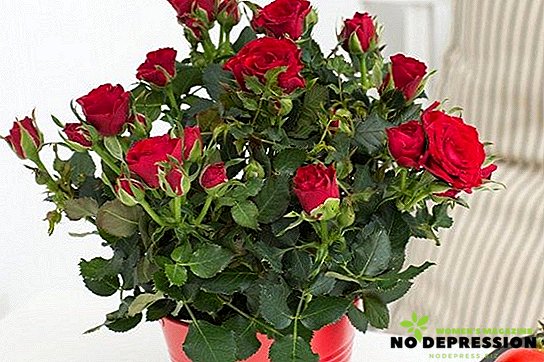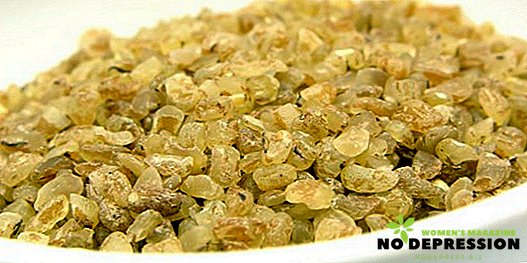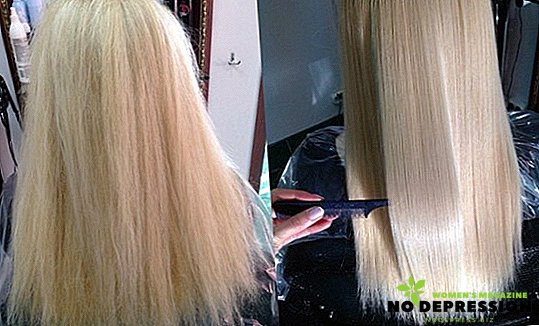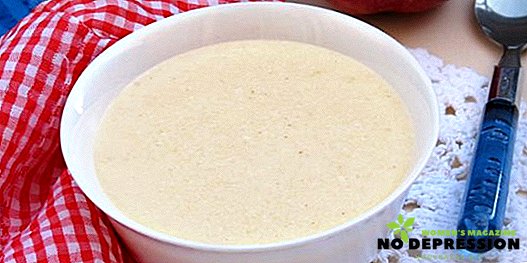Have you decided to purchase an indoor rose? It is worth remembering that this plant is quite demanding and capricious. In our article we will tell you how to take care of it correctly: we will share the secrets of pruning, watering and transplanting so that you can grow a beautiful and strong plant at home.

Where to place the plant pot
The rose is a light-loving plant, therefore it is better to leave it on the windowsill from the east or southeast side. In this case, the plant will receive the right amount of light, even in winter. However, there are varieties that will be more comfortable on the south side. To understand whether a flower feels comfortable is quite simple:
- If the leaves have a rich color, there are bookpeople, which means that the plant has enough heat and light, it feels comfortable.
- If the leaves and buds grow poorly, become sluggish, yellowed spots appear on the edges, most likely the plant has been burned. In this case, it should be immediately transferred to the shade and left there until full recovery. In the following, select a window sill with a not so strong light for a rose.
In the summer, when there is a lot of sunshine, you need to rearrange the pot with a flower on a stand or shelf, and to avoid burns, you should cover the window with translucent tulle, which will scatter the rays of the sun.
But when late autumn or winter comes, additional lighting should be used: a special lamp is switched on for about three hours daily. Otherwise, the flower will become sluggish due to lack of sun, immunity can be significantly reduced, which is why pests can attack the rose: spider mites, aphids and other insects. To avoid burns, there should be a distance of 30 cm between the top of the bush and the lamp.
Temperature and water are important care points.
 Roses love light, but they hardly endure the heat. Therefore, in a room where there are pots of flowers, there must be high humidity - at the level of 60% (but not more than 80%).
Roses love light, but they hardly endure the heat. Therefore, in a room where there are pots of flowers, there must be high humidity - at the level of 60% (but not more than 80%).
Tropical climate is also contraindicated for plants: high temperature and humidity level, since in this case there is a high probability of the appearance of a fungus that will destroy the culture.
In the summer bushes should be sprayed with water, but not cold - it should be at room temperature. In winter, the water is worth a little warm - about 38 degrees. Spray flowers 1-3 times a day. If a pot with a rose is near the battery where dry air is observed, events can be held more often. But the number of sprays should be reduced if it is cold in the room.
It is better to spray water in the evening, since in the morning the droplets of moisture remaining on the leaves can attract sunlight to themselves, which will cause burns. And so that the air was not too dry, you need to put a couple of bowls of water near the pots.
Roses hardly tolerate frosts and heat, too, because in summer time the temperature in the room should be around +20 degrees, and in the winter - about +15 degrees, but not less than + 8ºС, otherwise the flower will freeze.
In the period of active flowering, you can "bathe" the plants. Here you need to follow a few simple rules:
- hold an event once a week;
- the temperature should be around +36 degrees;
- in order not to damage the plant, make a weak pressure;
- to prevent water from entering the soil, you need to firmly wrap the pot in a bag or wrap it in plastic;
- after "bathing", leave the container with the flower in the bath for 3-4 hours until completely dry.
Such manipulations will remove dust and small insects that have decided to settle on the bush. In addition, the rose will receive the moisture necessary for further development. Do not bathe only those plants that have already managed to throw buds.
Fertilization and watering issues
In winter, the flower should be watered about once a week, in the spring the number of waterings gradually increase - it all depends on the state of the plant and weather conditions.
For example, in summer, when it is very hot, the plant needs to be watered every day, since water is needed both to nourish the root system and to protect against pests. Pour about 0.5 l of water into the pot and wait for about half an hour - the amount of liquid you need will soak into the soil, and the rest will go into the pan - you should immediately pour the water out. It is not necessary for the fluid to stagnate, as this can lead to infection.
 If you use tap water for irrigation, it needs to be poured into a container and allowed to stand for 2-3 days so that harmful trace elements and salts settle to the bottom. But it is much more convenient to water the plant with distilled water.
If you use tap water for irrigation, it needs to be poured into a container and allowed to stand for 2-3 days so that harmful trace elements and salts settle to the bottom. But it is much more convenient to water the plant with distilled water.
Before watering, the soil should be loosened a little, which will determine the moisture content of the substrate. If it is wet enough - the ground sticks together a bit, it is better to postpone the procedure for a couple of days. In addition, loosening helps enrich the root system with oxygen, which leads to plant growth.
Many novice gardeners poured a flower because of ignorance. To recognize the excess moisture is quite simple - on the plant, such formations as foottails (small, the size of a flea) settle, which disappear as soon as you reduce the number of waterings.
If the soil in the pot is slippery and gives off an unpleasant smell, it should be discarded, as this is the first sign of the appearance of the fungus. The pot itself is disinfected, the roots of the roses are cleaned of the soil and washed, and then the flower is planted again. Only such activities will help avoid the death of the plant.
During the growing season and active flowering, you need to use complex mineral supplements. It is best to use "Ideal", but any other drug that contains potassium and nitrogen is also suitable. Among the organic dressings should be distinguished mullein - dilute it with water in a ratio of 1:10.
The top of old bushes (if they are more than three years old) should be sprayed with liquid fertilizers once in 30-40 days, applying them with a spray gun.
How is the rose transplant?
Young rose bushes need to be transplanted into a new container every year. To do this, it is best to buy clay containers with a hole to drain excess fluid (drainage hole). You can also use plastic containers, but it must have a pallet. And when buying a pot, remember that it should be at least 5 cm wider and higher than the previous one.
The purchased pot should be prepared: it is washed in warm water, adding a little antibacterial soap to kill any infection. After that, the pot is carefully washed. If you have purchased clay containers, you can soak it in water for a couple of hours. Old pots need to be washed, sanitized (for example, simply by pouring boiling water) and used for planting other plants.
After preparing the pot, a drainage layer is placed on its bottom, for which pebbles can be used, broken bricks, and porcelain stoneware, a layer - up to 4 cm.

Next, pour the nutritional mixture consisting of:
- Sod soil.
- River sand (coarse).
- The rotted dung.
Moreover, the soil or sand must be ignited in the oven to kill the microorganisms and bacteria that can live there.
It's time to get the rose itself. To do this, in the old pot, where the flower grows, pour about 1 liter of water, which will soften the soil. After 20-30 minutes, you need to gently clasp the flower at its base, turn the pot over and carefully take the plant along with part of the earthy coma.
It is better to clean the soil from the roots, the very base of the bush should be thoroughly rinsed in water. In a new pot, cover the soil with a layer of 3-5 cm, ram a little, put the roots of roses on top, straighten them and fill them with soil. Pour about 50 ml of water into the container, wait until it is absorbed - along with it the earth will settle. Add additional substrate so that it covers the roots.

After transplantation, the rose should be removed in a warm room, but it should not be standing in open sunlight. Do not water the flower during the week - during this time the plant must adapt. A week later, the rose can be returned to its usual place on the windowsill, and three weeks after transplantation - to make the first mineral dressing.
The main thing is to transplant before the appearance of buds, that is, in early spring. Sometimes work is carried out in the fall - you need to wait until all the leaves fall off. But in this case it is necessary to do without top dressing, since the presence of additives can cause flowering, which will weaken the "immunity" of the room rose.
A few words about cropping
Houseplants need pruning - depends on their appearance and health. It is best to carry out the work in late November, when the rose has faded. Take a sharply pruned pruner and remove all dry and damaged shoots growing inside the bush twigs. Moreover, the tool blade must be wiped with a cotton swab dipped in alcohol after each shoot.
Also, you need to cut and the main stems, about 20-30%. The main thing is to have at least 5 eyes (buds) on each branch. Plant wounds should be powdered with activated charcoal tablet powder. After pruning, a room rose should be brought to a cool place.
As you can see, it is not so difficult to care for a room rose at home, this plant is not as capricious as, for example, an orchid, but without proper care the flower will quickly wither.
How to care for cut roses
You were presented with roses, and you want to save them for a longer period? In this case, our advice will help you with this.
Flower preparation
How you prepare the plants depends on their lifespan. To extend it, do the following:
- First, remove the packaging from the flower.
- We place the stems for 2-3 hours in the water.
- Try to ensure that the water does not fall on the leaves, because of this they can start to rot.
You also need to cut the stems themselves, and the blade must be disinfected. The cut angle is sharp.
Water preparation
The quality of water largely determines the time during which plants can stand in a vase without losing their shape. It is best if it is filtered or distilled. There should also be no precipitation in the water. According to the observations of many experts, this will prolong the life of roses by about 3-4 weeks.
Also prepare the vase itself: wash it thoroughly with liquid soap or dish detergent.
Temperature
It should be remembered that such plants can quickly wilt, if they are immediately brought from a cold street into heat. Flowers need to "teach". First, put them in the coldest room in the apartment, and after adaptation you can begin the preparation.
Storage tips
You should not put a vase with flowers near the heaters, also the plants should not get direct sunlight. As a result of this neighborhood roses will give off moisture, which is why it will quickly wither. The optimum temperature in the room - around 19 degrees.
What to add to the water
Cut flowers need to be fed - in this case, they will stand longer. A good option additives: vinegar with sugar (1 tbsp. 1 liter of water). And to stop the reproduction of harmful bacteria in water, you should use:
- Aspirin: 0.5 tablets per 1 liter of water.
- Citric acid.
- 1-2 tablespoons of vodka.
By following these tips, you can extend the life of cut roses, which will delight you for a long time with their freshness and aroma.












